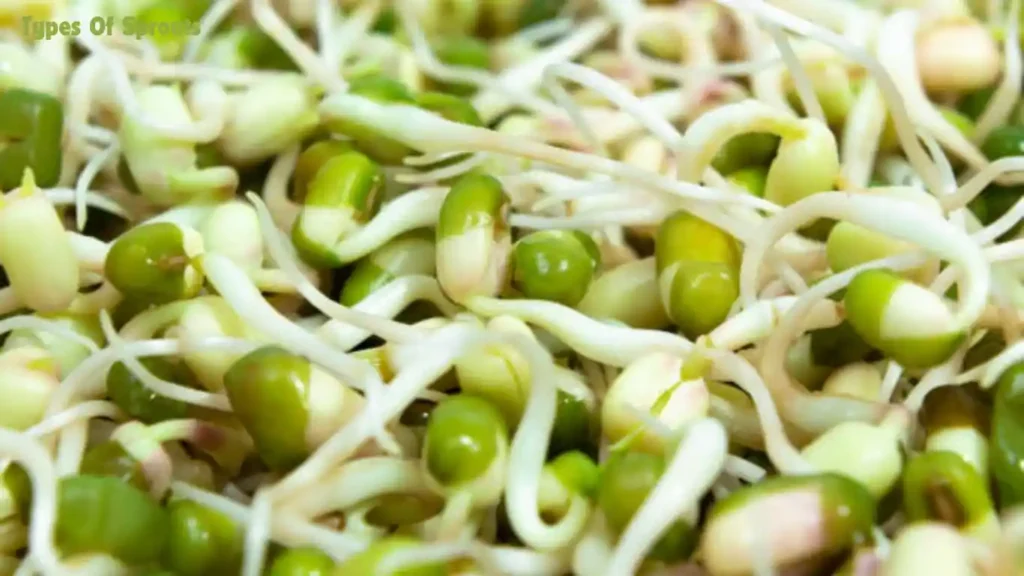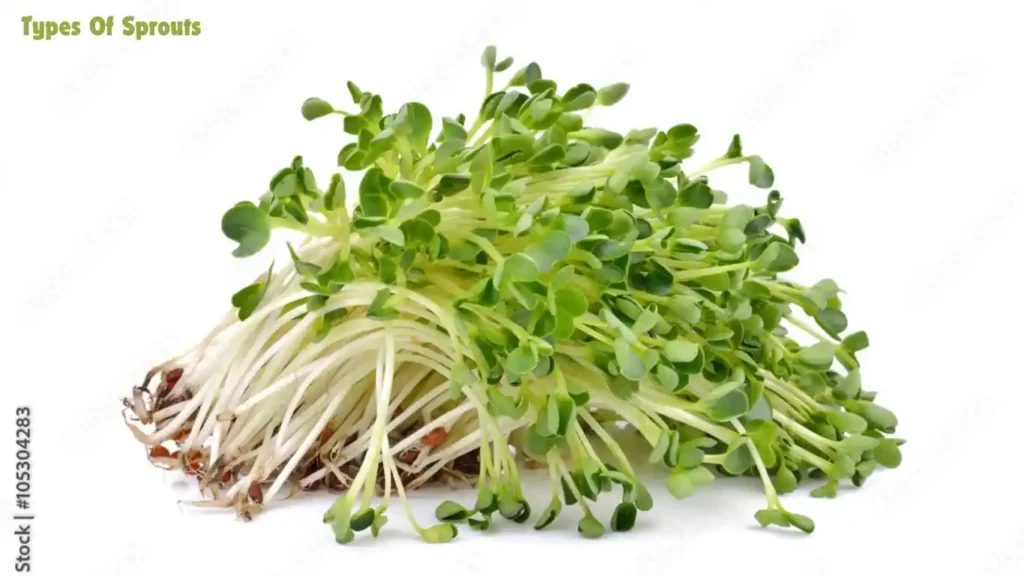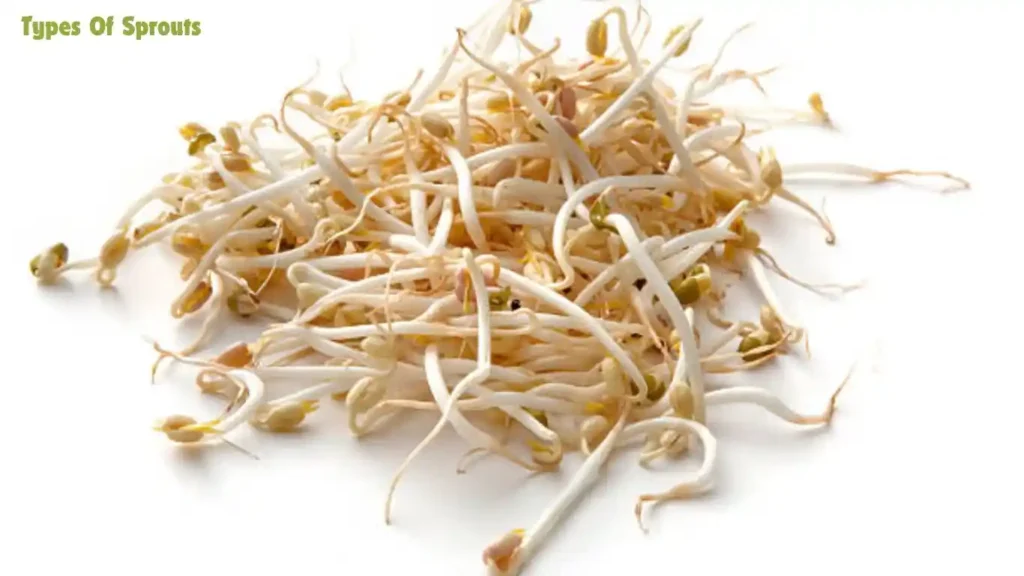Explore Best Types Of Sprouts-Complete Guides
Types Of Sprouts are little, supplement-squeezed rockin’ rollers that have obtained a standing for their clinical benefits and flexibility in the kitchen.
Whether you’re a means fan or an interested cook, comprehending the different sorts of children can add a new, lively touch to your eating plan. In any case, what are children, and why do they say they are such a darling?
Benefits Types of Sprouts
Healthy Benefits: These are great in critical enhancements, including accessories A, C, and K, minerals like magnesium and calcium, and an outstanding abundance of fiber.
They also contain raised cell fortifications, which help fight free moderns and support them by significant means.

Medical benefits: The medical advantages of beginners are various. They can also develop processing because of their high thread content, help the immune framework with their wealth of nutrients and cell support, and even guide weight reduction by giving a low-calorie, complemented thick food selection.
Common Types of Sprouts
Horse provide Beginners: Horse spread nodes are among the most famous types of beginners. They are a little sensitive and have a gentle, marginally nutty taste. These beginners are unimaginably flexible and can be used in various dishes.
They are continually added to servings of mixed greens, sandwiches, and wraps for a crunchy surface and a healthy lift. Hay is great in nutrients A, C, and K, giving a lot of protein and thread.
Mung Bean Juveniles: Mung bean are a nail in various Asian food types. They are known for their new surface and, to some degree, sweet taste. These juveniles are often used in dish singes, soups, and spring registrations.
Mung bean nodes are ample in accessories C and K, folate, and manganese. They are a fair abundance of protein and fiber, making them a significant stretching of a proper eating pattern.
Broccoli Juveniles: Broccoli nodes have obtained omnipresence given their raised levels of sulforaphane, a combination believed to have dangerous action and fighting effects.
These juveniles have a rather peppery taste and are habitually added to servings of lush greens, sandwiches, and smoothies.
Broccoli is overflowing in complements A, C, and K, and they, in like manner, give a ton of thread and malignant growth expectation experts.
Lesser-Known Types of Sprouts
Radish Youngsters: Radish are known for their hot, peppery flavor, which adds a striking kick to any dish. They are more humble and more delicate than mature radishes yet creep up out of nowhere concerning taste.
Radish is a fantastic extension for serving leafy green sandwiches and soups. They are copious in supplements A, B, C, E, and K and contain immense amounts of calcium, iron, magnesium, phosphorus, potassium, and zinc.
Sunflower Fledglings: Sunflower seats are a higher stress than most others and have a nutty, crunchy surface. They are delicious in plates of mixed greens, sandwiches, and as a fix for avocado toast.
Sunflowers are a proper abundance of protein, nutrients A, B, D, and E, and minerals like calcium, iron, magnesium, potassium, and zinc. Their irregular taste and sound shape make them famous among well-being specialists.
Specialty Types Of Sprouts
Onion Sprouts: Onion nodes have a different onion flavor that is much calmer than mature onions. They are perfect for adding a slight onion taste to dishes without overwhelming other tastes.
Onion is often used in salads and sandwiches and as a garnish for stews and braises. They are rich in vitamins A, B, C, and E and contain calcium, iron, magnesium, and potassium minerals.

Fenugreek Youngsters: Fenugreek are known for their to some degree powerful taste and are commonly used in Indian food. They are commonly added to curries, combined greens, and stews.
Fenugreek is great in accessories A, B, and C and minerals like iron, magnesium, and potassium. They are likewise known for their helpful properties, such as supporting handling and reducing disturbing.
Pea Juveniles: Pea commonly called pea shoots, are sweet and fragile, flavoring like new peas.
They are attractive in leaves of green greens, sandwiches, or delicately sautéed as a side dish. Pea shoots are great in accessories A, C, and K and contain huge proportions of folate and fiber. Their amazing taste and nutritional.
How to Grow Projections at Home
Supplies Required: Developing beginners at home is clear and requires little hardware:
A wide-mouth container: A bricklayer container works impeccably.
A cross-section top or cheesecloth: This covers the container and allows wind stream while keeping the seeds from falling out.
Seeds suitable for production: Pick seeds that are explicitly named for development to ensure safety and attainment.
Water: Spotless, new water is essential for washing and watering the seeds.
Bit by Bit Compass
Splash the Seeds: Start by setting your preferred seeds in a container and covering them with water. Allow them to splash for 6-12 hours. This relaxes the seed coat and starts the germination cycle.
Channel and Wash: After watering, channel the water using the cross-section top or cheesecloth. Flush the seeds with new water and drain once more.

Sprout: Spot the container in a dull, warm spot. Wash and channel the seeds twice daily to keep them wet yet not saturated. Ensure fair wind stream to forestall shape effect.
Reap: In 3-7 days, your beginners will be designed to order. They ought to be around 1-2 inches long. Please give them a last wash and I appreciate them!
Protection Information for Growing and Eating Sprouts
Remaining away from Pollution: To ensure your beginners are covered to eat, remaining away from contamination is important:
Utilize Clean Hardware: Always disinfect your containers and growing supplies before use. Flush Seeds Totally: Wash your seeds before starting the growing system to destroy any desired impurities.
Keep up with Clean Hands: Clean up simply before watching for the seeds and beginners.
Legitimate Ventilation: Ensure that your growing container has a sufficient wind current to forestall the growth of dangerous microbes.
Honest Capability: When your beginners are prepared, legitimate capacity is essential to keeping up with their originality and well-being:
Refrigerate Fledglings: Store your beginners in the fridge to keep them new and forestall bacterial growth.
Utilize Fixed Holders: Keep Types Of sprouts in a fixed case to keep up with moisture and newness.
Swallow Rapidly: Finishing your beginners in less than a week is ideal. Always check for any signals of decay, like off smells or repulsive surfaces.
Including Types Of Sprouts into Your Diet
Salad Recipes: Respectable Horse Feed Beginner Plate of mixed greens: Join hay with cherry tomatoes, cucumber, and a light lemon vinaigrette for a vital, healthy plate of mixed greens.
Mung Bean Fledgling Pan-fried food: Sauté mung bean shoots with garlic, ginger, and soy flavoring. Add chimes, peppers, and carrots for a beautiful, tasty dish.
Smoothie Thoughts: Green Power Smoothie: Mix broccoli with spinach, banana, and almond milk. This smoothie is packed with compliments and is perfect for morning help.
Culinary Uses for Types Of Sprouts
Enhancements and Garnishes: Make significant enhancements for different dishes. Their emotional tones and new tastes can enhance soups, hashes, and even pizzas.
Nodes like radish and clover add a crunchy surface and a pop of flavor, making your dinners entertaining and healthy.
Sprout-Based Containers Sprout Sandwich: Layer clover and radish shoot with avocado, tomato, and hummus on entire-grain bread for a solid, blessed sandwich.
Sprout Salad: Combine different beginners with combined greens, nuts, and a tart flavoring for a complemented salad.
Sprouting for Pets
Types of Beginners for Pets: Pets can likewise benefit from beginners’ dietary use. Here are a few beginners suitable for pets:
Grain Fledglings: For felines and canines, grain sprouts are rich in supplements and can be effortlessly added to their eating regimen.
Wheatgrass Fledglings: Felines greatly enjoy wheatgrass Types Of sprouts, which can assist with assimilation and give essential nutrients and minerals.
Medical Benefits for Pets
Types Of Sprouts offer a few medical edges for pets:
Stomach-related Well-being: The fiber and compounds in beginners can support assimilation and advance regular pet elimination.
Wholesome Lift: Beginners are loaded with nutrients and minerals, giving pets essential complements for general well-being and wealth.
Hydration: Beginners have a high water content, which helps keep pets hydrated, which is extremely helpful for cats who may not hydrate.
Projections in Additional Cultures
Asian Cooking: In Asian cooking, are pin-fixed in many dishes. They are often used in pan-sears, soups, and mixed greens, creating a crunchy surface and new flavor.
Types Of Sprouts like mung bean and soybean are commonly used to protect Thai and pho dishes.
Western Cooking: In Western cooking, are likewise well-known and employed in different ways. They are oftentimes added to servings of mixed greens, sandwiches, and wraps for a nutritional lift.
Types Of Sprouts like hay and broccoli shoots are regularly found in wellbeing cognizant cafés and supermarkets.
Environmental Benefits of Producing Types Of Sprouts
Attainable Cultivating: Developing beginners at home is a possible cultivating practice. It requires little space, water, and assets, contrasting customary developing systems.
Developing your beginners can decrease your carbon imprint and add to a better world.
Reducing Food Squander: Extending is an incredible method for reducing food waste. It allows you to use seeds that could somehow be disposed of, changing them into healthy food.
By growing seeds at home, you can limit blowing and ensure that all elements of the seed are used.
Conclusion
Types Of Sprouts are tasty and loaded with accessories, making them an essential addition to any eating regimen.
From everyday varieties like hay and mung bean beginners to thing types like onion and pea grows, there’s a beginner to suit each taste preference.
Whether you’re hoping to support your complement consumption, add surface to your dinners, or reduce food squander, sprouts are a great conclusion.
You can participate in their medical benefits and culinary adaptability by combining Types Of sprouts into your eating practice and trying other things with different mixtures.
I accept that you found this manual for the kinds of beginners verifying! If you have any additional questions or need help, click here.
FAQS
What are the different types of sprouts?
Pulses/legumes (pea family) – bean sprouts: alfalfa, clover, fenugreek, lentil, pea, chickpea (garbanzo), mung bean, and soybean. Cereals (grasses): oat, wheat, maize (corn), rice, barley, and rye.
What are the most popular sprouts to eat?
Although you can sprout (and eat) just about any seed, the two most typical sprout types we see at the need are bean and alfalfa.
What is a sprout chart?
Sprout Chart delivers your sprouts and microgreens’ taste, color, and cultivation time. You can efficiently pick the growing seeds for your ensuing formula.
Which sprouts grow faster?
Chickpeas are one of the quickest-growing beans; they will sprout in two days.
Which sprouts are rich in protein?
Lentils, mung beans, soybeans, and sunflower seeds are a few of the best seeds for a high-protein growing seed mixture. All of these seeds are packed with protein and are simple to grow.
Which dal is used for sprouts?
Moong dal is known to be the most typical lentil used for growing and is packed with both wool and protein.
Can we mix different sprouts together?
Mixed nodes can be a variety of sprouted moong, matki, kala chana, safed vatana, kabuli chana, and chawli. You may pick and select what you wish to use as all nodes are beneficial. In Indian markets, you just ask for the mixture you want.
Can we eat yogurt with sprouts?
It is an awesome source of protein and has a high amount of dietary fiber. This raita helps in cooling your stomach, adds micronutrients to your spread, and helps you to get bright skin and lose extent. Take the curd in a bowl. Add the shoots to the curd.
